
Warranty
Tyre Labelling
Disregarding any of the safety precautions and instructions contained in this information.
Sheet may result in tyre failure or explosion causing serious personal injury or death.
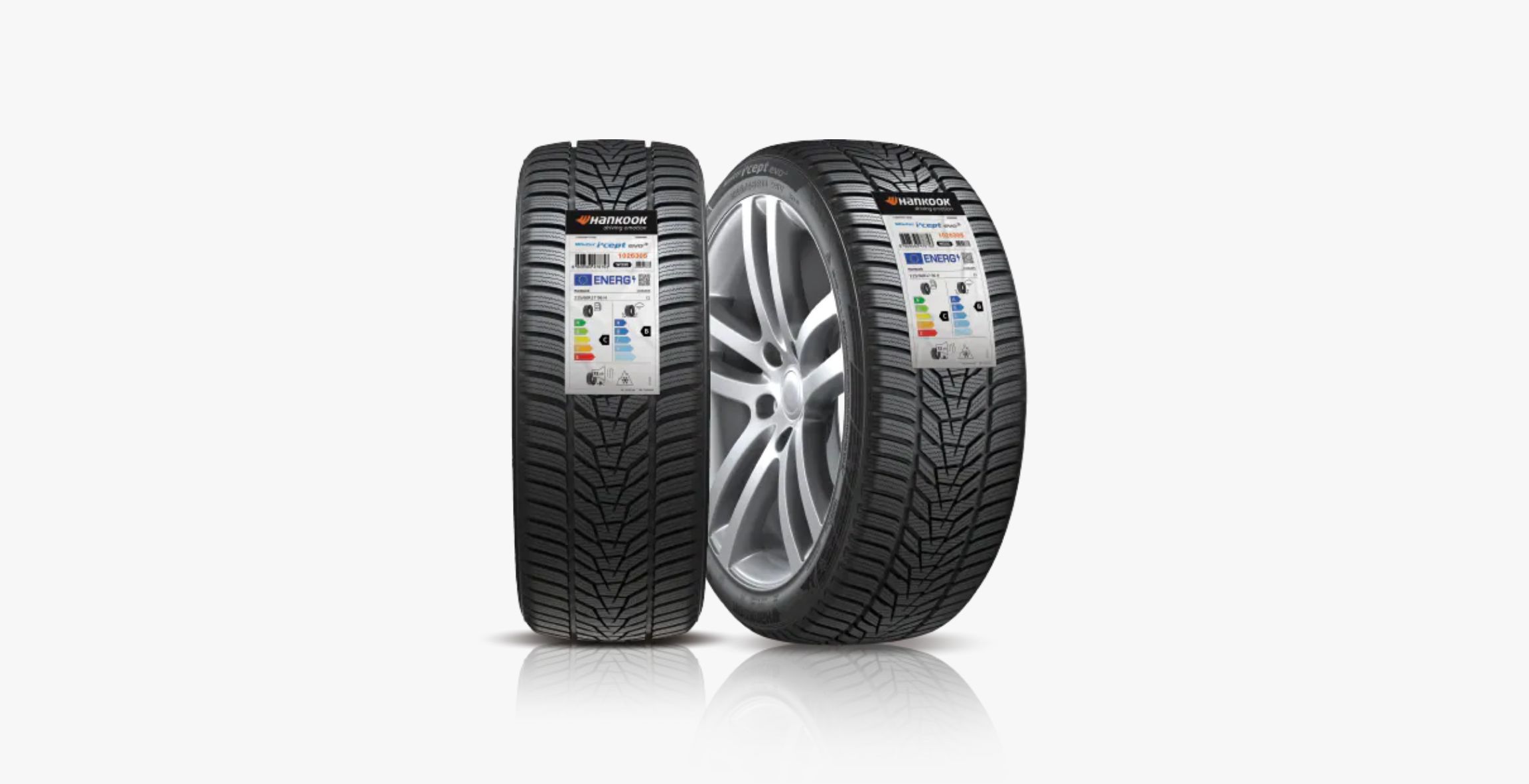
EU Tyre Label
The EU tyre labelling system provides customers with valuable information on tyres, including important data on performance, energy efficiency and environmental friendliness. Regulations require tyre manufacturers to declare fuel efficiency, wet grip rating and external rolling noise performance for C1, C2 and C3 tyres (i.e. tyres mainly fitted on passenger cars, and on light and heavy duty vehicles). In the past a lack of reliable and comparable information on the performance of tyres made it difficult for consumers to take these elements into account in their purchasing decision, especially when replacing a used set of tyres. From 1st November 2012 tyre performance data was displayed at the point of sale and on all technical promotional literature such as catalogues, leaflets and web-based marketing. With the EU Regulation 2020/740, effective from 1st May 2021, a new logo design is implemented. The aim is to lead a market transformation towards a more fuel-efficient, safe and low-noise tyre, beyond the standards already achieved. It will also pave the way for competition to run on tyre performance and price, which will in turn stimulate investment in research and development. (Source: European Commission)
The New EU Tyre Label
The EU is introducing a new labelling scheme for tyres which came into force on 1st May, 2021.
Hankook is working hard to provide useful information to customers in adopting the tyre labelling regulation.
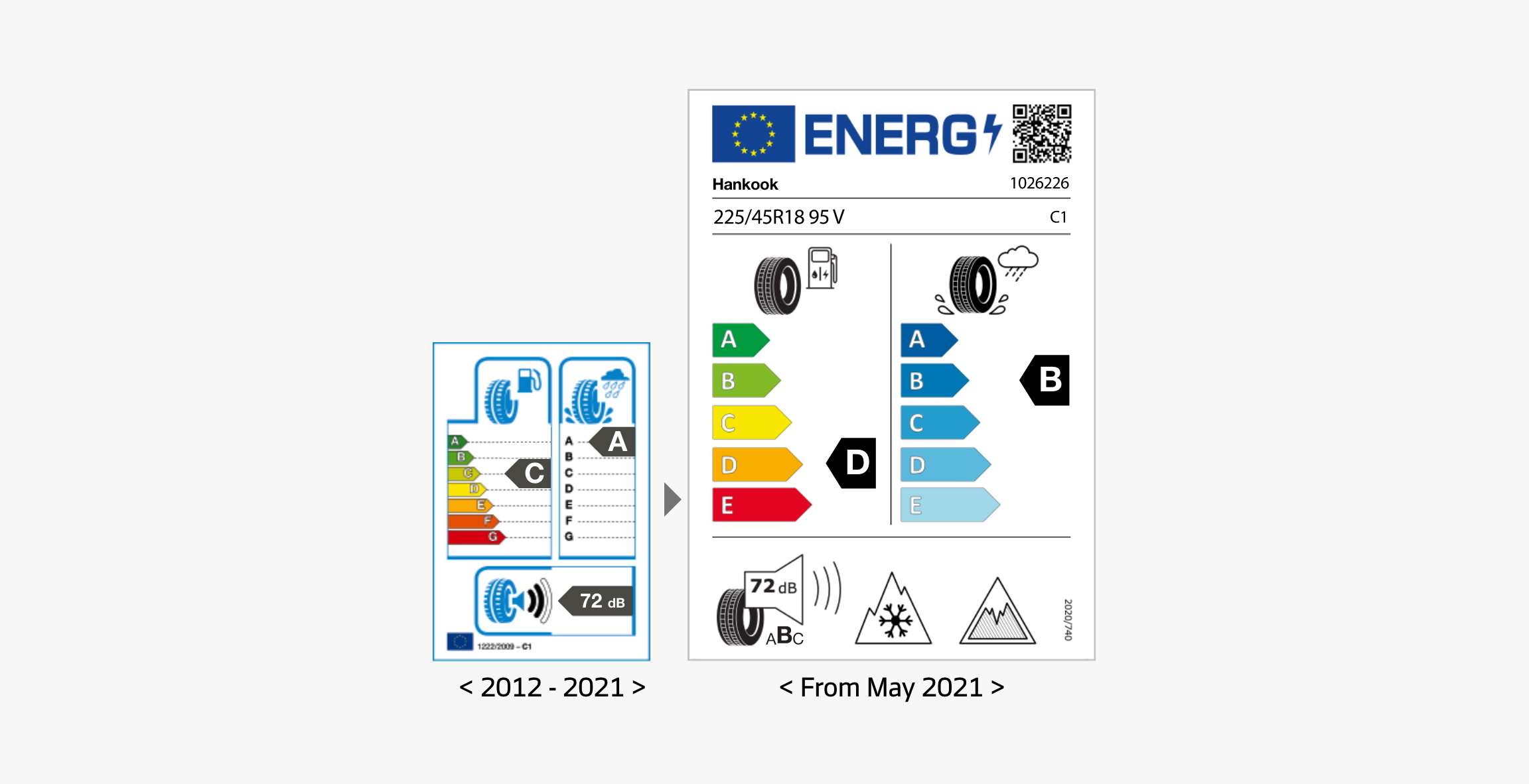
New Tyre Identification System
1. QR Code
The QR Code allows access to the EU’s product database EPREL, where customers can check the more detailed product information sheet.
2. Tyre Type Identifier
The tyre type identifier code enables a clear identification of a product.
3. Label Scale :
Class D is no longer empty (for C1&C2 tyres only)
F and G merge to form E.
4. New Pictogram
There are new standard for including an additional pictogram.
The snow tyre shows, if a tyre is suitable for severe snow conditions.
The ice pictogram will be included on the new EU tyre label of a C1 class.
Product Information Sheet
The new Product information sheet (PIS) is generated in the EPREL database, based on the information Hankook have reported.
| Delegated Regulation (EU) 2020/740 | |
| Supplier name or trademark | Hankook |
| Commercial name or trade designation | WiNter i*cept X |
| Tyre type identifier | 1023395 |
| Tyre class | C1 |
| Tyre size designation | 255/55R19 |
| Speed category symbol | T 190 km/h |
| Load-capacity index | 111 |
| Load version | XL |
| Fuel efficiency class | C |
| Wet grip class | D |
| External rolling noise class | B |
| External rolling noise value | 73 dB |
| Tyre for use in severe snow conditions | Yes |
| Tyre for use in severe ice conditions | Yes |
| Date of start of production (Week / Year) | 36/20 |
| Date of end of production (Week / Year) | - |
| Supplier's address | Technical Service, Siemensstr. 14 D-63263 Neu-Isenburg, DE |
| Additional information | |
EPREL Database
Manufacturers must register information on all products sold in Europe in EPREL. Based on this information, the EPREL database provides the product information sheet and displays the tyre label, for each registered product. Consumers can access the database by scanning the QR code featured on the new EU tyre labels.
-
Public Database
Severs with “Public” security classification
-
Public Website
Citizens, Resellers, Researchers
-
Download Data
Exel format QR codes Pictures
Labelling Criteria
The EU tyre labelling system is implemented by the following criteria:
1. Fuel Efficiency
Fuel efficiency is measured by the rolling resistance (RR) of tyres. Rolling resistance is the resistance that occurs when a round object such as a ball or tyre rolls on a flat surface in a steady velocity straight-line motion. It is caused mainly by the deformation of the object, the deformation of the surface, or both.
Additional contributing factors include wheel radius, forward speed, surface adhesion, and relative micro-sliding between the surfaces of contact. It depends very much on the material of the wheel or tyre and the sort of ground.
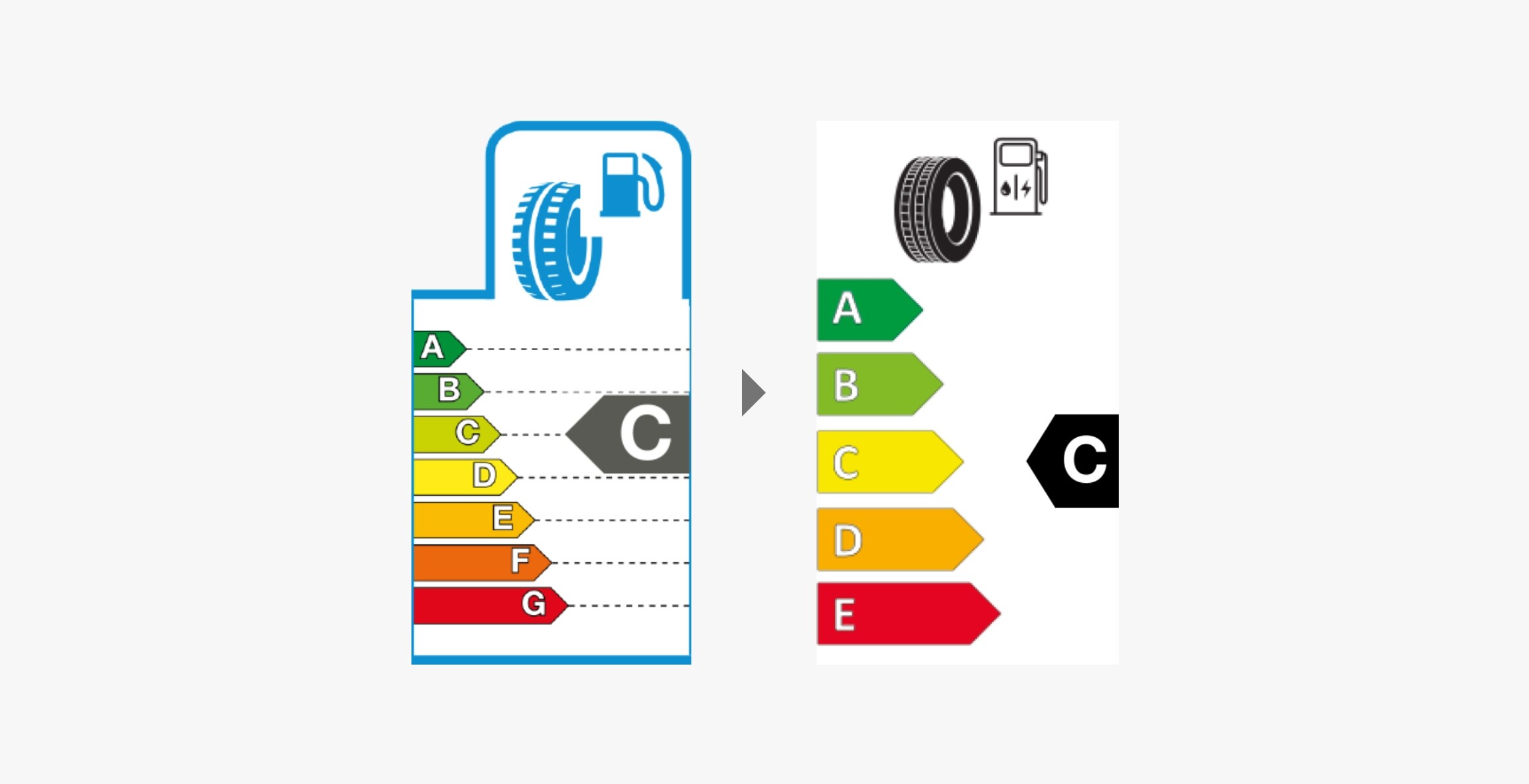
Five classes from E (least efficient) to A (most efficient)
Effects may vary among vehicles and driving conditions, but the difference between an E and an A class for a complete set of tyres could reduce fuel consumption by up to 7.5% and even more in the case of trucks.
| Rolling Resistance | PCR (C1) | LTR (C2) | TBR (C3) |
|---|---|---|---|
| A | RRC ≤ 6,5 | RRC ≤ 5,5 | RRC ≤ 4,0 |
| B | 6,6 ≤ RRC ≤ 7,7 | 5,6 ≤ RRC ≤ 6,7 | 4,1 ≤ RRC ≤ 5,0 |
| C | 7,8 ≤ RRC ≤ 9,0 | 6,8 ≤ RRC ≤ 8,0 | 5,1 ≤ RRC ≤ 6,0 |
| D | 9,1 ≤ RRC ≤ 10,5 | 8,1 ≤ RRC ≤ 9,0 | 6,1 ≤ RRC ≤ 7,0 |
| E | RRC ≥ 10,6 | RRC ≥ 9,1 | RRC ≥ 7,1 |
2. Wet Grip
Wet grip indicates the braking performance of tyres on wet road surfaces and is related to the safety performance of vehicles. Tyres with low rolling resistance have high fuel efficiency, but can have safety problems. This is because tyres with low rolling resistance have low adherence to roads when the roads are wet. Accordingly, the European Council requires tyre companies to provide information about their tyres adherence (or grip) when applying the brakes on wet roads.
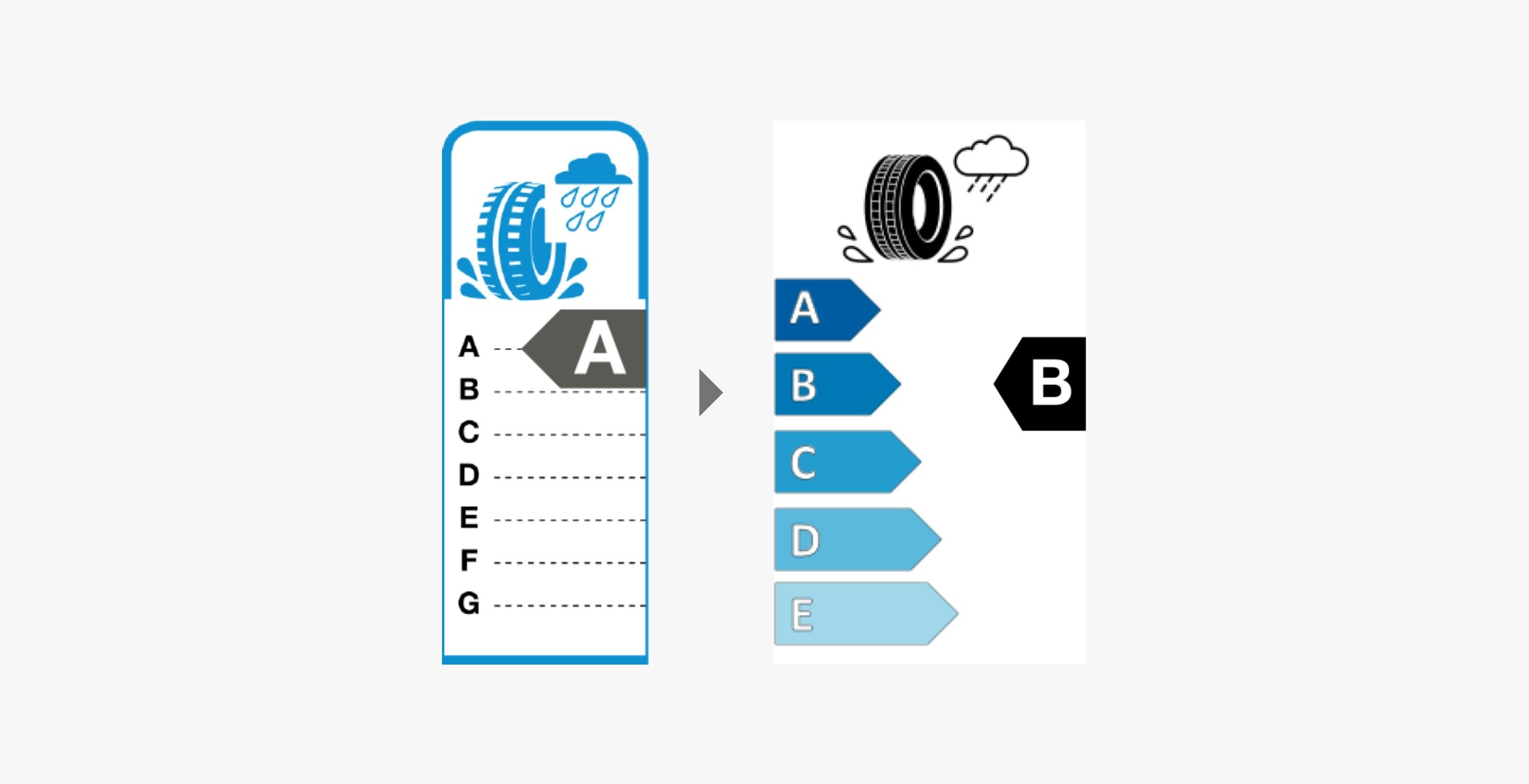
Five classes from E (longest braking distances) to A (shortest braking distances)
Effects may vary among vehicles and driving conditions, but in the case of full braking, the difference between an E and an A class for a set of four identical tyres could be up to 30% shorter braking distance (e.g. for a typical passenger car driving at 80 km/h speed this could be up to 18m shorter braking distance).
| Wet Grip | PCR (C1) | LTR (C2) | TBR (C3) |
|---|---|---|---|
| A | RRC ≤ 6,5 | RRC ≤ 5,5 | RRC ≤ 4,0 |
| B | 6,6 ≤ RRC ≤ 7,7 | 5,6 ≤ RRC ≤ 6,7 | 4,1 ≤ RRC ≤ 5,0 |
| C | 7,8 ≤ RRC ≤ 9,0 | 6,8 ≤ RRC ≤ 8,0 | 5,1 ≤ RRC ≤ 6,0 |
| D | 9,1 ≤ RRC ≤ 10,5 | 8,1 ≤ RRC ≤ 9,0 | 6,1 ≤ RRC ≤ 7,0 |
| E | RRC ≥ 10,6 | RRC ≥ 9,1 | RRC ≥ 7,1 |
3. Noise Level
Exterior noise levels are measured in decibel (dB) and are indicated in three categories (A-B-C). In addition to the specification of noise level in Decibels (dB) a pictogram displays whether the tyre external rolling noise performance is above the European mandatory limit value (C = noisier tyre), up to 3 dB below the future limit value (B = average noise level) or more than 3 dB below the future limit value (A = low noise tyre).
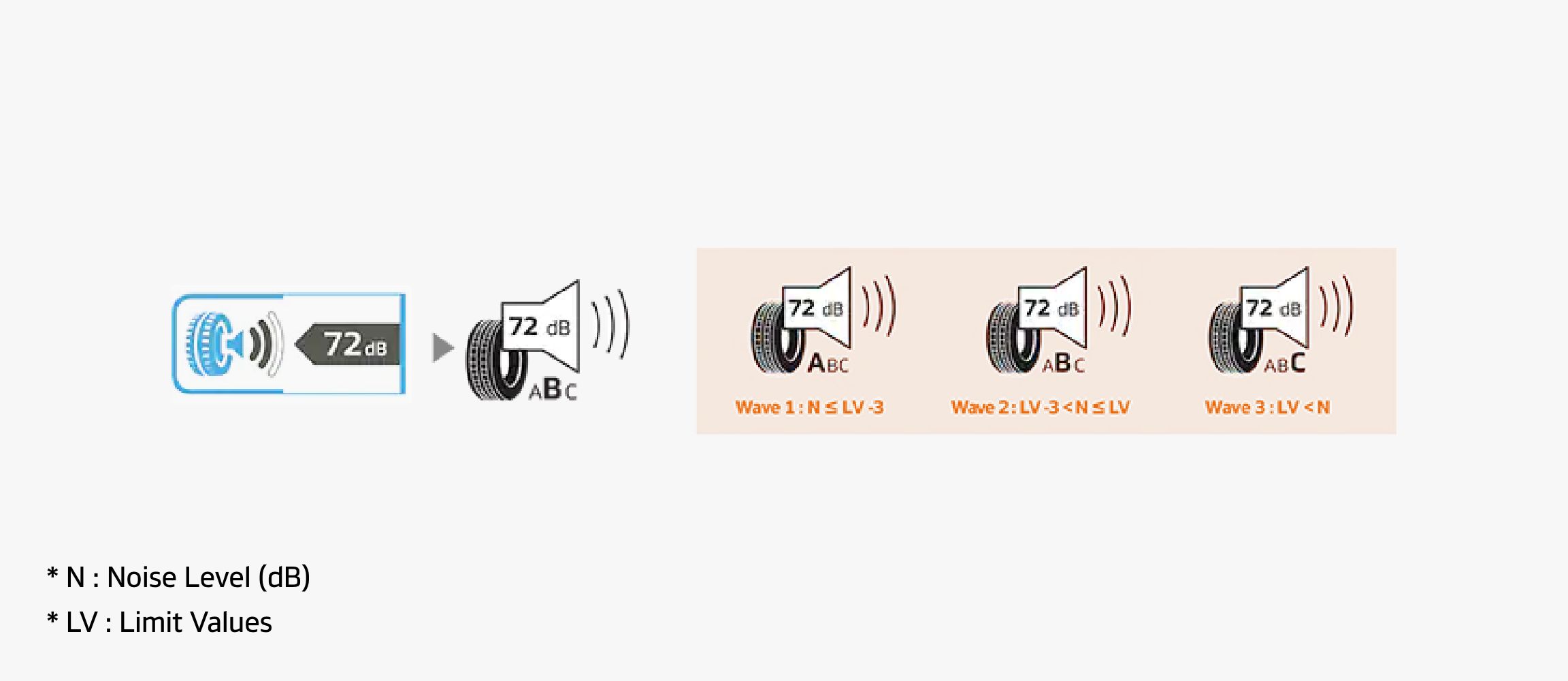
4. Winter Characteristics
If a product has the characteristics to be used in winter conditions, a pictogram for snow grip will be added to the EU label sticker. In the case of Nordic PCR (C1) tyres an ice grip logo may be added as well.


